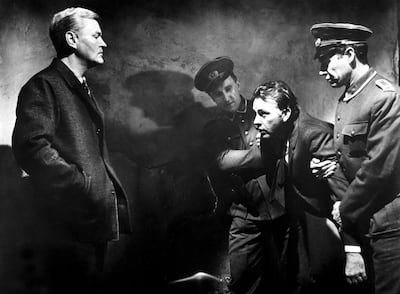No one better captured the chilling reality of the clandestine battleground that defined the Cold War era than the British spy writer John Le Carre.
As a former officer with Britain’s Secret Intelligence Service – or MI6 as it is generally known – Le Carre was able to draw on his experience of working in Germany at the height of the long-running stand-off between the West and the Soviet Union to write a series of spy thrillers that vividly captured the dark work of Cold War espionage.
His best-known novels, The Spy Who Came in From the Cold and Tinker Tailor Soldier Spy, which were both made into acclaimed movies, drew heavily on the climate of betrayal and treachery that became some of the key characteristics of the Cold War spying community.
Having begun his career in the murky world of spying in the British Army’s Intelligence Corps, where he did his National Service in the 1950s, Le Carre then joined the domestic security service MI5 after studying at Oxford, where he also did some part-time espionage work spying on left-wing student agitators.
He then switched services in 1960 to join MI6, and was posted to Bonn, and thence Hamburg, under Foreign Office cover, and it was his experience during this period that provided him with material that formed the basis of his best-selling novels.
Le Carre, whose real name was David Cornwell, later recalled his astonishment at the low morale and general sense of confusion he found dominated the mindset of his intelligence colleagues during that period.
His posting to Germany coincided with the exposure of the infamous Soviet spy ring, including notorious double agents such as Kim Philby, who had spied for Moscow from the 1940s onwards before fleeing into exile in Russia.
The suspicion that Moscow still had agents working at the heart of the British intelligence establishment made for an atmosphere of suspicion and deceit, one that Le Carre adroitly explored in The Spy Who Came in From the Cold, his first major bestseller, was published to critical acclaim in 1963.

The book’s success enabled him to resign from the intelligence service and become a full-time writer, becoming one of Britain’s most successful post-war English novelists and, arguably, the finest thriller writer of the 20th century.
The book, which features the master-spy George Smiley, one of Le Carre’s finest fictional creations, set the tone for his many other publications, which explored the deep paranoia that affected the intelligence community during that period.
The novelist Graham Greene, who had also worked as a British intelligence officer during the Second World War, hailed the book as “the best spy story I have ever read”.
Critics believe that Le Carre’s ability to explore the complex world of betrayal stemmed from his own difficult upbringing in Dorset, where his mother abandoned the family home when he was just five years old after his father, Ronnie, a Bentley-driving con man, was jailed for fraud.
There followed, as Le Carre movingly later recalled, “16 hugless years”.
While Le Carre enjoyed huge success with his later work, his output was not always well received by his former colleagues in the British intelligence community.
In later life Le Carre’s work became increasingly politicised, and he was a prominent critic of Britain’s role in the 2003 Iraq War.
This was particularly galling for MI6, because the service was heavily implicated in the failure to find any evidence that Iraqi dictator Saddam Hussein possessed weapons of mass destruction, one of they key reasons given for launching the invasion.












